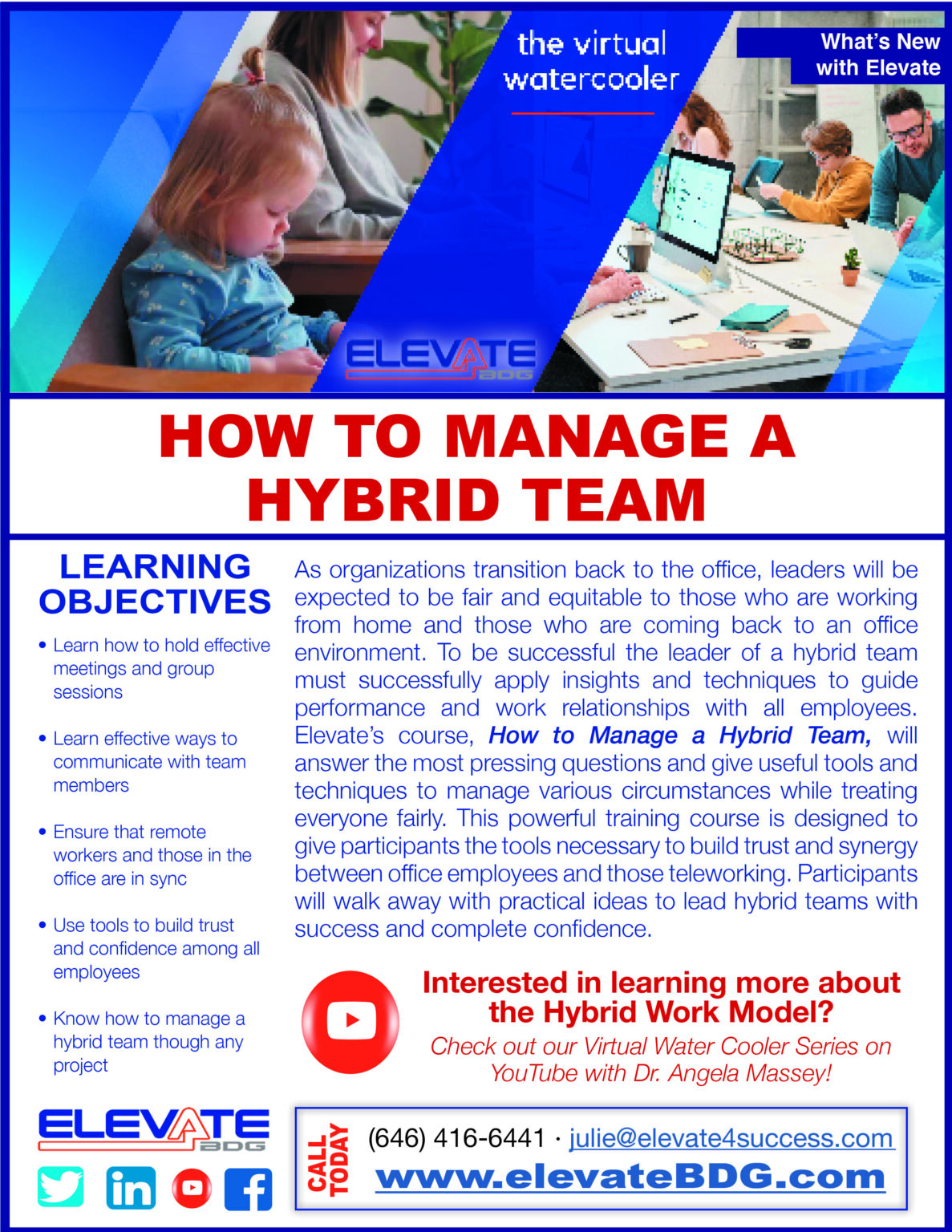To say the least, the past couple of years have caused a bit of a stir to businesses and organizations throughout the world. We had hopes of welcoming in the new year and putting the past behind us, but the gloom and doom of 2020 is starting to show its ugly face again in the form of the “far more contagious” Omicron variant. Just this week, thousands of U.S. schools have delayed the students’ return to the classroom after the holiday break, instead opting to return to the dreaded remote learning option for the first weeks of the year. As lockdowns are becoming a more realistic fear looking into 2022, many businesses are encouraging staff to start working from home again and the term “hybrid workplace” is again at the forefront of the business world.
As we start looking at our leap back into the virtual workplace, it is also important to note that according to the U.S. Labor Department, a record 4.5 million American workers quit their jobs in November, with employers hiring 6.7 million people the same month. 2021 was coined as the year of “The Great Resignation” – the year when workers quit their jobs at historic rates. According to a recent article in The Guardian, “knowledge workers are quitting from burnout or sympathy with the budding anti-work movement, there are just as many reasons to suspect that many quit in search of better work opportunities, self-employment, or, simply, higher pay.”
As a leader, it is important to know how to navigate this confusing workplace dynamic and not become another COVID workplace statistic. It is time for employers to make sure they are doing everything they can to retain the talent they have by taking care of your employees’ needs from a different perspective than we would have just a few years ago.
Tips for Leaders to Take Care of Your Employees in a Hybrid Workplace
When working remotely many employees are left wondering whether their hard work is being recognized or appreciated from afar. Questions concerning whether one’s boss cares about them tend to surface more these days than ever before, so if you are trying to retain your talent, it is important that leadership knows how to express their gratitude and appreciation for their employees without being overbearing or micromanaging employee behavior. Employee wellness is core to productivity and fulfillment and will ultimately lead to an uptick in employee performance if managed right. Here are a few tips to keep employee appreciation & recognition at the forefront of your managerial techniques as we approach a new wave of COVID, leading to more remote & hybrid roles within the workplace.
- Provide Employees with Resources – Back in the day, we were told to never mix business with personal life, but it is a new environment now and the personal and business are intermingled as your employees are juggling home life and work-life all at once. Proactive leaders will provide their employees with resources to deal with stress, emotional issues, physical issues.
- Update benefits programs – Times are changing and so should what you offer your employees in terms of benefits. Consider aligning the benefits program that you already have in place with what your employees need NOW, not 10 years ago.
- Be Flexible with employee time – It is important that leadership understands that when working from home, distractions arise. If your employee is performing well and meeting deadlines, there is no need to micromanage their hours. Instead, reward them for their hard work by allowing flexibility in their day or signing off their computer a little early if the situation allows.
- Make sure they know you care – Remember, communication is key! Tell it to them straight and make sure they are feel recognized. If an employee goes above and beyond, show your appreciation with a personal email, or even a thank you video to really get your point across, send e-cards or even gift cards to their inbox for that exemplary moments.
- Include Everyone – Be sure to be inclusive to ensure that you are keeping your remote employees engaged with the office happenings. Create a space where on-site and remote employees can co-mingle and share their visions with each other. Send Daily email shout-outs and highlight an employee of the week/month to show you care, regardless of where you are located.
Not all individuals are equally skilled at operating within a hybrid environment, and some jobs are just better done on-site, making hybrid work ideal for some members of your team and not for others. It is the leader’s job to ensure that all employees are treated fairly and that your hybrid work model does not create an “us versus them” mentality among on-site and off-site colleagues. In Elevate’s Virtual Water Cooler Series on YouTube, Dr. Angela Massey presents 2-minute tips for business leaders that explore the ins and outs of running a successful hybrid team. In this week’s episode, we will explore how you can make sure your employees feel appreciated and recognized in today’s hybrid workplace.





